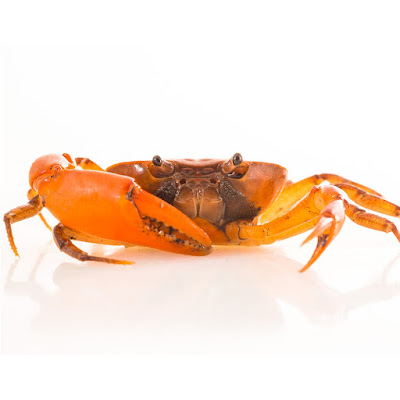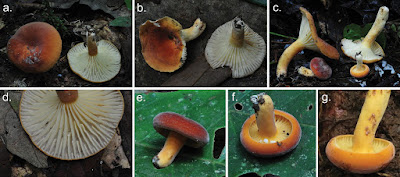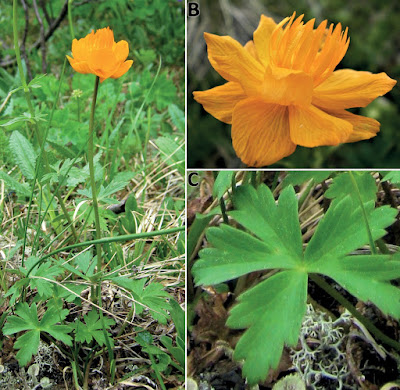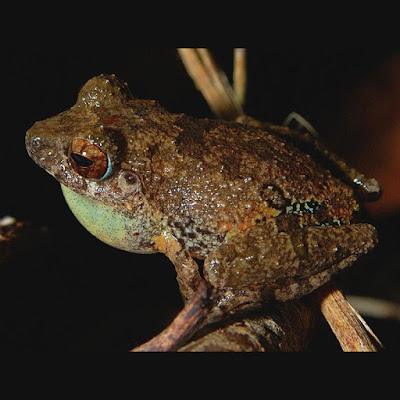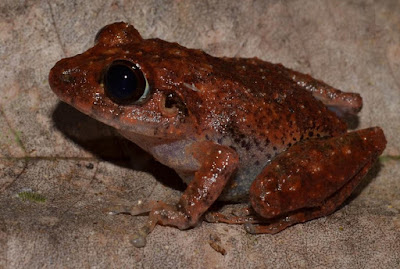[Most Recent Entries] [Calendar View]
Wednesday, January 30th, 2019
| Time | Event | ||||||
| 1:37p | [Crustacea • 2019] Phallangothelphusa tangerina • A New Species of Freshwater Crab of the Genus Phallangothelphusa Pretzmann, 1965 (Decapoda: Pseudothelphusidae), from the foothills of the Serranía Yariguíes of Colombia
Abstract A new species of Phallangothelphusa Pretzmann, 1965, is described from the foothills of the Serranía Yariguíes, Santander Department, Magdalena river basin, Colombia. The number of the species increases to five: P. dispar (Zimmer, 1912), P. magdalenensis Campos, 1998, P. juansei Campos, 2010, P. martensis Cardona & Campos, 2012, and Phallangothelphusa tangerina n. sp. The new species is distinguished from its congeners mainly by the morphology of the first male gonopod, particularly by the shapes of the mesial and lateral processes, and the surface and outline form of the apex. Keywords: Crustacea, Brachyura, Strengerianini, Neotropical region, Colombia, taxonomy Phallangothelphusa tangerina n. sp. Martha R. Campos, Carlos A. Lasso and Maribel Arias. 2019. A New Species of Freshwater Crab of the Genus Phallangothelphusa Pretzmann, 1965, from the foothills of the Serranía Yariguíes of Colombia (Crustacea: Decapoda: Pseudothelphusidae). Zootaxa. 4550(4); 579–584. DOI: 10.11646/zootaxa.4550.4.8 | ||||||
| 2:00p | [Fungi • 2019] Lactifluus bicapillus (Russulales, Russulaceae) • A New Species from the Guineo-Congolian Rainforest
Abstract The milkcap genus Lactifluus is one of the most common ectomycorrhizal genera within Central African rainforests. During a field trip to the Dja Biosphere Reserve in Cameroon, a new Lactifluus species was found. Molecular and morphological analyses indicate that the species belongs to Lactifluus section Xerampelini and we formally describe it here as Lactifluus bicapillus sp. nov. Keywords: Ectomycorrhizal fungi, Gilbertiodendron, Lactarius, phylogeny, taxonomy, tropical Africa, Uapaca Lactifluus bicapillus Lescroart & De Crop Diagnosis: Lactifluus bicapillus differs from L. xerampelinus by its yellowish-orange to dark red cap, fertile lamella edge, a lampropalisade with two types of terminal elements as pileipellis type, and a distribution in the Guineo-Congolian rainforest. ... Distribution: Known from Cameroon and Gabon. Ecology: Guineo-Congolian rainforest, scattered on forest floor under Gilbertiodendron dewevrei, Uapaca guineensis, U. acuminata, and U. paludosa. Etymology: A combination of ‘bi’ and ‘capillus’, referring to the two types of terminal elements in the pileipellis and stipitipellis. Eske De Crop, Jonas Lescroart, André-Ledoux Njouonkou, Ruben De Lange, Kobeke Van de Putte and Annemieke Verbeken. 2019. Lactifluus bicapillus (Russulales, Russulaceae), A New Species from the Guineo-Congolian Rainforest. MycoKeys. 45: 25-39. DOI: 10.3897/mycokeys.45.29964 | ||||||
| 3:23p | [Botany • 2019] Trollius austrosibiricus (Ranunculaceae) • A New Species from South Siberia
Abstract Trollius austrosibiricus Erst & Luferov, sp. nov., a new species from Russian South Siberia is described and illustrated. This new species is endemic to Western and Central Siberia. Morphologically, it is close to the East Asian species T. chinensis and T. macropetalus. However, it differs from the aforementioned species due to the morphology of the rhizomes, aerial shoots, sepals and petals. This species is also distinguished from T. asiaticus, which is widespread in Russia (Western and Eastern Siberia), Mongolia, China, north-eastern Kazakhstan and in the northeast of the European part of Russia, in having a smaller number of sepals, longer persistent styles and petals longer than sepals. In addition, an identification key for all Russian species is given and all species have been discussed. Keywords: Ranunculaceae, Trollius, new species, South Siberia, Russia
Trollius austrosibiricus Erst & Luferov, sp. nov. Diagnosis: Trollius austrosibiricus is morphologically close to T. chinensis Bunge and T. macropetalus (Regel) Fr.Schmidt. It differs from these species in simple rhizomes, shorter aerial shoots, smaller flowers and shorter persistent styles. The new species is distinguished from T. asiaticus L. by a smaller number of sepals, longer persistent styles and petals longer than sepals. ... Habitat and ecology: Trollius austrosibiricus grows in subalpine and forest zones, in moist valleys at 350–2400 m elevation. It occurs in forest glades and fringes, in mixed-grass and mixed-grass-cereal dry and swampy meadows, along the banks of rivers, streams and small ponds with fresh water. Etymology: The specific epithet of the new species is derived from the type locality, South Siberia, Russia. Andrey Erst, Alexander Luferov, Victoria Troshkina, Dmitry Shaulo, Alexander Kuznetsov, Kunli Xiang and Wei Wang. 2019. Trollius austrosibiricus (Ranunculaceae), A New Species from South Siberia. PhytoKeys. 115: 83-92. DOI: 10.3897/phytokeys.115.30863 | ||||||
| 3:32p | [Herpetology • 2019] Pseudophilautus conniffae • A New Species of Pseudophilautus (Anura: Rhacophoridae) from southern Sri Lanka
ABSTRACT We describe a new Pseudophilautus species, P. conniffae sp. nov. from southern Sri Lanka. It was previously confused with Pseudophilautus rus (Manamendra-Arachchi & Pethiyagoda). The new species differs from the latter by the combination of the following characters: fourth toe webbing to penultimate subarticular tubercle on inner and outer sides (vs. fourth toe webbing in between penultimate and anetpenultimate subarticular tubercles on inner and outer sides), presence of conical median lingual process (vs. absent), and black patches on the posterior flank, anterior and posterior edges of the thigh (vs. black patches on the anterior surface of the thigh). Pseudophilautus conniffae sp. nov. may be sympatric with P. limbus (Manamendra-Arachchi & Pethiyagoda), which shares certain characters with the new species. The new species is, however, distinguished from P. limbus by the following characters: having supernumerary tubercles on manus (vs. lacking), absence of frontoparietal ridges (vs. presence), fourth toe webbing to penultimate subarticular tubercle on both sides (vs. fourth toe webbing between penultimate and anetpenultimate subarticular tubercle on both sides), third toe webbing to distal subarticular tubercle on both sides (vs. distal subarticular tubercle on outer side and below penultimate subarticular tubercle on inner side), and having the dorsum light brown with dark brown patches (vs. black and yellow variegated pattern on dorsum). The new species may be restricted to the southwestern wet zone of Sri Lanka. It is compared with all known Pseudophilautus species and also provided with a field key to identify it from those species that are sympatric with it or inhabit the southwestern wet zone. Keywords: Dediyagala, Pseudophilautus rus, Pseudophilautus silvaticus, lowland rainforest
Pseudophilautus conniffae sp. nov. Conniff’s Shrub Frog Diagnosis: Mature male holotype 23.5mm in SVL. Tympanum discernible. Dorsal surface of body glandular, with prominent warts. Supratympanic fold prominent. Canthal edges more or less straight. Skin on head co-ossified with cranium. Nuptial pads absent. Median lingual process present, small and conical. Tarsal tubercle present. Supernumerary tubercles present on manus and pes. Toes medially webbed. Chest and belly heavily granular. Large, dark brown more or less square-shaped blotch on middorsum between forelimbs. Anterior and posterior surfaces of thigh and posterior flank region with black and white patches (Image 1D). .... Etymology: The species name is an eponym honoring Karen Iynn Conniff for her generous support for the establishment of the WCSG and for her efforts to document the Odonata of Sri Lanka. Sudesh Batuwita, Madura De Silva and Sampath Udugampala. 2019. Description of A New Species of Pseudophilautus (Amphibia: Rhacophoridae) from southern Sri Lanka. Journal of Threatened Taxa. 11(1); 13120-13131. DOI: 10.11609/jott.3903.11.1.13120-13131 |
| << Previous Day |
2019/01/30 [Calendar] |
Next Day >> |
